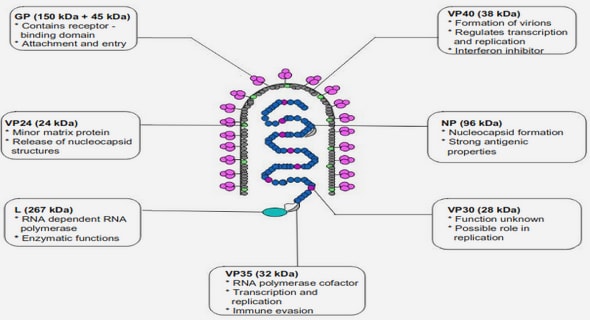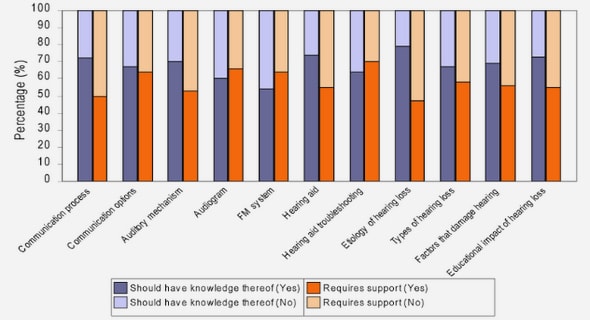Get Complete Project Material File(s) Now! »
Statement of the Problem
Finger millet [Eleucine coracana (L.) Gaertn.] is a small cereal grain grown in the semi-arid sub- tropical and tropical regions of Africa and Asia where it is one of the cereal staples (ICRISAT/FAO 1996, Obilana and Manyasa 2002). According to the US National Research Council (1996), finger millet has many good qualities. It is adapted to various agro-climatic conditions, its seeds can be stored for several years without insect damage, it is one of the most nutritious cereal grains and it tastes better than most other cereal grains. Finger millet is cultivated mainly in eastern, central and southern Africa, and in Asia, it is produced in India, Nepal and China (House 1995, Obilana and Manyasa 2002). According to Obilana and Manyasa (2002), finger millet annual world production is at least 4.5 million tonnes, of which Africa produces about two million tonnes. Finger millet grain contains various phenolic compounds, including tannins (Dykes and Rooney 2006) that have been shown to contribute to its antioxidant properties (Sripriya et al 1996). Plant phenolics are currently receiving a lot of attention as they show potential health-promoting effects, which are attributed to their antioxidant activity (Scalbert et al 2005). Tannins have been shown to exhibit higher antioxidant activity than other phenolics (Hagerman et al 1998). Currently, there are limited data on the phenolic composition of finger millet grain; the relationship between grain characteristics (e.g. colour) and phenolic content and composition, antioxidant activity, and the effect of variety on phenolic content and composition are hardly known. Although Ramachandra et al (1977) reported that phenolic compounds, including tannins, were concentrated in the outer layers of the finger millet grain, the location of tannins has not been determined. Knowledge on the above stated issues is required so that the potential of finger millet as a source of antioxidant phenolics can be evaluated. The prevailing high temperatures and relative humidities in the tropics favour growth of micro- organisms (particularly fungi) on cereal grains (Williams and McDonald 1983). Fungal growth results in reduction of the quantity and quality of the grain (Christensen and Kaufmann 1974). Additionally, some fungal species can produce mycotoxins, which can be hazardous to humans and animals (D’Mello and MacDonald 1997). Some of the technologies used by the predominantly poor communities in the semi-arid sub-tropical and tropical regions of Africa and Asia to store (McFarlane et al 1995) and process (Murty and Kumar 1995, Daiber and Taylor 1995) sorghum and millet grains may be ineffective and unhygienic and they may thus particularly predispose the grains and their products to contamination by micro-organisms and mycotoxins. Published data indicate that sorghum and its malt are usually contaminated with various fungi and mycotoxins (Rabie and Lübben 1984, McFarlane et al 1995, Bandyopadhyay et al 2002). Although there are barely any published data on fungal and mycotoxin contamination of finger millet and its malt, the trends are probably similar to those reported for sorghum (McFarlane et al 1995). It has been shown that in some sorghum grain types there is a negative correlation between fungal infection levels and total phenolic content and amount of phenolic type, particularly the tannins, the flavonoid 3-deoxyanthocyanins and flavan-4-ols, suggesting that the compounds contribute to resistance to infection (reviewed by Chandrashekar and Satyanarayana 2006). Some finger millet grain types contain tannins as sorghum (Dykes and Rooney 2006) and may contain flavonoid compounds that are similar to those found in sorghum, which may contribute to resistance to fungal infection. The US National Research Council (1996) states, “Despite its importance, finger millet is grossly neglected both scientifically and internationally”. Finger millet is almost entirely a subsistence crop and in Africa, it is used primarily for the production of traditional foods, almost none of which are commercialised (ICRISAT/FAO 1996). While the utilisation of sorghum, another less common cereal, is being increased by using it to produce novel commercial products such as pasta, bread, cookies, and snack foods (Taylor et al 2006), the same is very limited with finger millet. Wheat is the ideal cereal for producing baked goods because it contains gluten proteins, which are essential for the quality of the products, but it grows well in cooler climates and hence countries in hotter regions import part or all of the wheat using the scarce foreign exchange. Partial substitution of wheat with finger millet in bakery products such as cookies may have many advantages including a high nutritional value, saving foreign exchange, and health- promoting (due to the phenolic antioxidants).
Literature Review
The known chemistry of phenolic compounds and their significance in food quality, and information on their antioxidant activity are reviewed. The structure and composition of finger millet grain are reviewed. Reports on the occurrence and localisation of phenolic compounds in finger millet grain and their contribution to the antioxidant activity of the grain are reviewed. Research on the potential health-promoting effects of sorghum and finger millet phenolics is reviewed. Information on the contamination of sorghum and finger millet grains by fungi and mycotoxins during malting is reviewed. Literature on the effects of malting on the phenolic content of sorghum and millets is reviewed. Information suggesting the contribution of phenolic compounds to the resistance of sorghum and finger millet grains to infection by fungi is evaluated. Research on the effects of thermal processing on phenolic content and antioxidant activity of sorghum and finger millet foods is also reviewed. Outer layers McDonough et al (1986) showed that the outer layers of the finger millet kernel comprise a membranous pericarp, which is loosely associated with the kernel at maturity, and a testa which overlays an aleurone layer (Figure 1.2.1A). The authors observed that the pericarp is a fragile membranous layer that is not fused to the testa at any particular place and it can easily be removed by rubbing or washing, similar to what had been described earlier by Angold (1979) and Hilu et al (1979). The pericarp appeared to be made up of several layers of tissue (McDonough et al 1986). McDonough et al (1986) also reported that the external appearance of the finger millet testa layer was quite striking and different from other cereals. They observed that the testa of finger millet varied from red to purple in colour and consisted of five distinct layers. The first layer was 1.5 μm thick, and autofluoresced blue, indicating the presence of ferulic acid or lignin. The second layer (beneath the first layer) appeared striated and was made up of sections of “interlocking” tissue that formed mound-like structures (Figure 1.2.1B). Junctions could be seen (Figure 1.2.1B) between the mound-like structures in the outer testa layers when the testa was viewed in cross-section; the junctions were thought to correspond to the interlocking sections seen from the surface. The second layer was the thickest (5.5-17.5 μm) and had darker pigmentation than the lower layers; it probably contained more phenolic compounds than others did. The third and fourth layers were approximately the same thickness (1.4-2.1 μm) and had the same shade in colour. The third layer had distinct wave formations throughout (Figure 1.2.1B), while the fourth layer was largely straight, with some isolated wave patterns. The fifth layer was 1 μm thick and had a distinctly different colour from the previous layers. Although the authors suggested that the bulk of the finger millet grain phenolics, including the tannins, were concentrated in the testa layer, the location of the tannins was not determined. Endosperm The endosperm comprises most of the weight of the finger millet kernel (McDonough et al 1986). These authors found that the aleurone layer of finger millet was similar to that of maize, sorghum and pearl millet. It was one cell layer thick and surrounded the entire starchy endosperm. It was packed with aleurone bodies, but starch granules were absent. The aleurone cell walls autofluoresced intensely, suggesting the presence of phenolic compounds. While Angold (1979) documented that the finger millet starchy endosperm had distinct floury and corneous layers, McDonough et al (1986) identified three distinct types of starchy endosperm, the peripheral, corneous and floury endosperm (Figure 1.2.1C), similar to what was observed in pearl millet, sorghum and maize. The cells of the peripheral endosperm were the smallest of the endosperm cells. The cell contents of the peripheral endosperm were tightly packed. A large number of protein bodies were embedded in a protein matrix and were associated with compound (8.0-16.5 μm in diameter) and simple starch granules. The corneous endosperm formed the largest portion of the endosperm. It had cells of varied size. It had predominantly compound starch granules (3.0-19.0 μm in diameter) and there were simple starch granules in between them. Patches of a protein matrix were associated with the starch granules. The floury endosperm was made up of compound starch granules (11-21 μm in diameter). Protein bodies and a protein matrix were hardly present. The cell walls of the starchy endosperm strongly fluoresced, indicating the presence of phenolics.
TABLE OF CONTENTS :
- DECLARATION
- ABSTRACT
- ACKNOWLEDGEMENTS
- TABLE OF CONTENTS
- LIST OF TABLES
- LIST OF FIGURES
- 1. INTRODUCTION
- 1.1. Statement of the Problem
- 1.2. Literature Review
- 1.2.1. Finger millet grain structure and composition
- 1.2.1.1. Structure of the finger millet grain
- 1.2.1.2. Composition of the finger millet grain
- 1.2.2. The chemical nature, occurrence and classification of plant phenolics and their significance in food quality
- 1.2.3. Antioxidant activity of plant phenolics
- 1.2.4. Finger millet grain phenolics and their localisation, and their contribution to the antioxidant properties of the grain
- 1.2.5. Potential health-promoting effects of plant phenolics with particular reference to sorghum and finger millet phenolics
- 1.2.6. Contamination of sorghum and finger millet grains and malts by fungi and mycotoxins and the potential contribution of grain phenolic compounds to fungal resistance
- 1.2.6.1. Contamination of sorghum and finger millet grains by fungi and mycotoxins
-
- 1.2.6.2. Production of sorghum and finger millet malts and their contamination by fungi and mycotoxins
- 1.2.6.3. Effect of malting on the phenolic content of sorghum and finger millet
- 1.2.6.4. Relationship between phenolic content and amount of phenolic type and resistance of sorghum and finger millet grains to fungal infection
- 1.2.6.5. Proposed mechanisms of antimicrobial activity of phenolic compounds
- 1.2.6.6. Other potential fungi resistance factors of sorghum and finger millet grains
- 1.2.7. Effects of thermal processing on phenolic content and antioxidant activity of sorghum and finger millet grain foods
- 1.2.8. Conclusions
- 1.3. Hypotheses
- 1.4. Objectives
- 2. RESEARCH
- 2.1. Occurrence and location of tannins in finger millet grain and antioxidant activity of different grain types
- 2.1.1. Abstract
- 2.1.2. Introduction
- 2.1.3. Materials and Methods
- 2.1.3.1. Finger millet grain
- 2.1.3.2. Analyses
- 2.1.3.3. Microscopy
- 2.1.3.4. Statistical analysis
- 2.1.4. Results and Discussion
- 2.1.5. Conclusions
- 2.1.6. References
- 2.2. Influence of phenolics in finger millet on its malt quality
- 2.2.1. Abstract
- 2.2.2. Introduction
- 2.2.3. Materials and Methods
- 2.2.3.1. Finger millet grain, sorghum grain standards and control barley malts
- 2.2.3.2. Fungal infection of finger millet grain
- 2.2.3.3. Malting
- 2.2.3.4. Total fungal count
- 2.2.3.5. Germinative energy and malt quality
- 2.2.3.6. Nutritional analyses
- 2.2.4. Results and Discussion
- 2.2.5. Conclusions
- 2.2.6. References
- 2.3. Effect of partial substitution with finger millet on the nutritional and functional quality of cookies, with particular reference to phenolics
- 2.3.1. Abstract
- 2.3.2. Introduction
- 2.3.3. Materials and Methods
- 2.3.3.1. Wheat and finger millet flours
- 2.3.3.2. Rheological analysis
- 2.3.3.3. Baking
- 2.3.3.4. Nutritional analyses
- 2.3.3.5. Spread and thickness
- 2.3.3.6. Texture
- 2.3.3.7. Colour
- 2.3.3.8. Sensory evaluation
- 2.3.3.9. Chemical analysis
- 2.3.3.10. Statistical analysis
- 2.3.4. Results and Discussion
- 2.3.5. Conclusions
- 2.3.6. References
- 3. GENERAL DISCUSSION
- 3.1. Methodologies
- 3.2. Research findings
- 3.3. Finger millet is a premium cereal grain for human food?
- 4. CONCLUSIONS AND RECOMMENDATIONS
- 5. REFERENCES
- 6. APPENDIX


